|
|
 |
Budapest’s Advantages as a Location for the European Institute of Innovation and Technology (EIT) |
|
Commissioned by the Ministry of Economy and Transport |
|
Project leader: Györgyi Barta |
The background analysis on the EIT’s location in Budapest presented an unusual challenge for the Budapest Department in both form and content; a scientifically sound and impeccably written lobbying material for the Hungarian government’s Brussels promotion effort had to be prepared under very short deadlines.
As our starting point, we argued that EIT should be a European coordinating centre and network, which would select, organise and co-ordinate Knowledge and Innovation Communities (KICs). The seat of the EIT must first of all accommodate VIP expectations, which can be guaranteed by a centrally situated metropolitan centre. In our study, we presented the macroregional position and international functions of Budapest. We also compared our suggestions to competing proposals; finally, we discussed and evaluated the locations and buildings intended to be the Budapest seat of the EIT.
In the end, Budapest has won the location right for the seat of the EIT. We believe – on the basis of the MET’s positive evaluation – that we have played a role in Hungary’s success. |
|
|
 |
CORINNA |
|
Cooperation of Regions for Innovation |
|
Commissioned by Interreg IIIC |
|
Lead partner: Eduard Sturm (Kärntner Wirtschaftsförderungs Fonds) |
|
Project leader: Mihály Lados |
|
In the framework of the CORINNA project, participating partners in the central territory of the Alps Adriatic Working Community (5 neighbouring regions from Hungary, Austria and Italy, as well as the state of Slovenia) have encouraged the intensification of cross-border cooperation in the area of technological development. The project has provided information on existing technological and R&D cooperation opportunities for enterprises and research institutions, and has provided significant aid to political decision makers by identifying best practice in the support of regional innovation systems through analysing the R&D policy, instruments and institutions, innovation capacities, common and complementary activities of the wider region. |
|
|
 |
EUDIMENSION |
|
Local Dimensions of a Wider European Neighbourhood Developing Political Community Through Practices and Discourses of Cross-Border Co-Operation |
|
Commissioned by the European Union 6th Framework Programme |
|
Lead partner: Leibniz Institute for Regional Development and Structural Planning (IRS) |
|
Project leaders: Ilona Pálné Kovács, Zoltán Hajdú |
|
The international consortium has undertaken the task of researching the local aspects and effects of the European Union’s neighbourhood policy along the EU’s external borders. The research activities of the Hungarian team have focused on the issue of civilian relations and cooperation along the Hungarian–Ukrainian border. On the common border, a share of civilian (especially cultural and educational) relationships have an ethnical component; however, these do not play a primary role in the framework of economic cooperation. Hungarian–Hungarian civilian relationships encompasses professional cooperation, but in some areas, the dominance of party politics can be observed. |
|
|
 |
EXLINEA |
|
Lines of Exclusion as Arenas of Co-operation: Reconfiguring the External Boundaries of Europe – Policies, Practices, Perceptions |
|
Commissioned by the European Union 5th Framework Programme |
|
Lead partner: Free University of Berlin |
|
Project leader: Béla Baranyi |
|
The Debrecen Department of HAS CRS, in cooperation with research institutes from eight countries, examined the question of cross-border relations in enlarging Europe. The scientific cooperation has analysed the opportunities of region-building over state borders in Central and Eastern Europe, with regards to socio-economic and other integration processes along the EU’s current and future Schengen borders. Within the research project, in addition to the Finnish–Russian, Estonian–Russian, Moldavian–Romanian, Greek–Bulgarian, Polish–German and Austrian–Hungarian borders, research on the Hungarian–Romanian and Hungarian–Ukrainian border areas has also become a prominent subject of inquiry. |
|
|
 |
G-FORS |
|
Governance for sustainability |
|
Commissioned by the European Union 6th Framework Programme |
|
Lead partner: Metropolregion Hannover-Braunschweig, Göttingen |
|
Project leader: Ilona Pálné Kovács |
|
The G-FORS project was created with the objective to develop an innovative analytical model for the study of governance for sustainability. It paid special attention to synergies between new governance methods and different forms of knowledge, taking into account the rapid changes within knowledge society. On the basis of experiences from nine countries, the research project aimed to identify which models of governance (hierarchy, network, market) and which forms of knowledge are most appropriate to achieve sustainability. |
|
|
 |
Hist.Urban |
|
Commissioned by INTERREG IIIB CADSES |
|
Lead partner: German Association for Housing, Urban and Spatial Development, Berlin |
|
Project leader: Békéscsaba Department |
|
The project’s objective – in accordance with the European Spatial Development Perspective and the strategic objectives of Interreg III programmes – was to review the role of historical heritage in urban development, and discover its opportunities in the CADSES area’s small and medium towns, encouraging more balanced (polycentric) spatial development and the identification of (sustainable) development paths based on local resources. Accordingly, the project, and especially the exchange of information and experiences in its framework, has provided assistance (guidance) for the participants in the elaboration of long-term revitalisation strategies embedded into long-term development goals. This contributes to the renewal of urban roles, the improvement of quality of life, as well as – through the protection and “reinterpretation” of historical heritage – to the strengthening of local identity throughout the entire CADSES area. |
|
|
 |
Carpathian project |
|
Commissioned by Interreg IIIB CADSES |
|
Lead partner: United Nations Environment Programme, Vienna |
|
Project leaders: Zoltán Gál, Iván Illés |
The project has aimed towards the adaptation of European spatial development strategies, as well as the integrated definition of environmental and spatial development objectives of in the economic, cultural and ecological problem areas of the Carpathian territory. This plays a role in strengthening protection for the territory’s natural resources, and, through encouraging cohesion and the preservation of natural and cultural heritage, its deeper internal and European integration. In addition to defining the tools of development policy, a medium-term development strategy (Visions and Strategies in the Carpathian Area) has been prepared, integrating analyses and studies created in other segments of the research project.
The task of CRS has been primarily research on the non-environmental and non-transport related aspects of the research. The centre was responsible for multiple work packages: a broad socio-economic analysis was prepared on the region’s situation; prior development programmes in the Carpathians and their lessons were considered in the evaluation of current plans, concepts and programmes; and finally, a broad strategy (VASICA) for the project area was developed. |
|
|
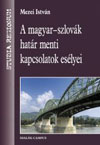 |
Socio-economic analysis of the Slovakian–Hungarian border area |
|
Basic research on the socio-economic analysis of the Slovakian–Hungarian border area |
|
Commissioned by the Hungary–Slovakia–Ukraine Neighbourhood Programme |
|
Project leader: Tamás Hardi |
|
Research on the Slovakian-Hungarian border area was undertaken in partnership with Forum Minority Research Institute (Šamorín). The research has primarily focused on cross-border migrations, their characteristic, motivations, impediments and spatial features, with a lesser focus on economic and non-profit organisations as well as local governments. The effects of EU- and Schengen-integration were explored along with the problems of specific segments of the Slovakian-Hungarian border. The results are based on in-depth interviews and a survey of employees. |
|
|
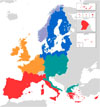 |
Territorial Cooperation |
|
Commissioned by the European Commission DG Regional Policy |
|
Project leader: Iván Illés |
In 2004, the European Commission announced a tender for a preliminary study with the title “Study on Territorial Cooperation and Transnational cooperation programmes within Structural Funds”. The study aimed to examine the previously defined Transnational cooperation areas of Interreg IIC and Interreg IIIB and make suggestions for their new borders in the 2007–2013 period, as well as to prepare thematic recommendations in individual cooperation areas for the orientation of upcoming projects.
Our institute has won lead partner position for the international project, and established the project team in cooperation with Belgian, German, Dutch and Swedish partners. The study was completed in 2005; themes were modified multiple times due to the changing priorities of the Commission. As the Commission had in the meantime defined cooperation areas, the crux of the project shifted from defining borders to determining the main project themes of individual areas. The shift in aims occurred independently of the research team, and required multiple modifications to the research report. The Commission approved the final version of the study at the beginning of 2006. |
|
|
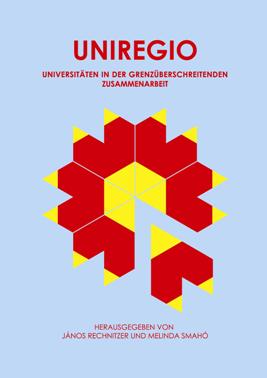 |
UNIREGIO |
|
Universities in cross-border cooperation |
|
Universitäten in der grenzüberschreitenden Zusammenarbeiten |
|
Commissioned by Austria–Hungary Interreg IIIA |
|
Project leaders: János Rechnitzer (HAS CRS), Ada Pellert (Alpen-Adria Universität) |
|
Empirical analyses within the framework of the Uniregio project are the first to research the higher education and research capacities as well as cooperation opportunities of the Austrian-Hungarian border area (Vienna, Lower Asutria, Burgenland, Győr-Moson-Sopron, Vas, Zala). An assessment of the project findings facilitates the broadening and enrichment of cooperation. In the border area, new development resources may be gained through creating appropriate linkages among knowledge bases, enhancing their cohesion and organisation, leading to the eventual emergence of a Central European knowledge region. |
|
|
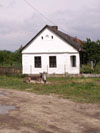 |
Small villages and small village citizens for equal opportunities |
|
Commissioned by National Office for Research and Technology, National Research and Development Programme 5th Framework Programme |
|
Project leader: Katalin Kovács |
|
In framework of the education and research programme, sociological and anthropological studies with the involvement of staff and students of the Pécs and Miskolc universities were undertaken in five microregions characterised by a high prevalence of small villages. The research project aimed to create a better understanding of available resources, livelihood strategies, and the coexistence of majority and minority groups in small village areas. In addition to a deep sampling on the microregional and settlement levels, the study has unveiled the successes and failures of (county-based, regional and national) settlement development and sectoral policies focused on the regeneration of small village areas. |
|
|
 |
Homokhátság homestead research programme |
|
Commissioned by Hungarian Regional and Spatial Development Office |
|
Project leader: Bálint Csatári |
|
Homesteads on the Great Plains have been in the focus of interdisciplinary research on settlements, ethnography, agrarian sociology as well as the region’s agricultural and rural development. After systematic change, both the circumstances of land ownership and the system of agricultural organisations had changed. These significant developments are further compounded by the apparent drying out of the middle Great Plains between the Duna and Tisza rivers due to global climate change. These fundamental and significant problems prompted this three-year research on homesteads, which has unearthed the typical environmental and land use trends in 105 settlements, the sustenance capabilities of agriculture and food processing in homestead economies, as well as social problems and settlement conflicts. We developed a typology of homesteads and inhabited peripheral areas with a unique GIS method applicable to the modelling of peripheral habitation, including the individual survey of almost 6000 homesteads. The results of the research were used by VÁTI (VÁTI Hungarian Public Nonprofit Company for Regional Development and Town Planning) int he planning of the Homokhátság microregions. The theses and partial results of the study were also published in a thematic special issue of the journal A Falu. |
|
|
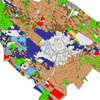 |
Kecskemét integrated urban development strategy research programme |
|
Commissioned by the Local Government of Kecskemét County Rights City |
|
Project leader: Bálint Csatári |
|
New development planning and tendering–fund management techniques facilitating local opportunities for accessing EU funds require new applied methods and solutions in urban studies. As a prerequisite of city rehabilitation tenders announced within Hungary’s urban growth pole programme, new city development strategies with a new emphasis on internal development differentiation, economic-entrepreneurial, as well as social and living space-related issues with a scientific basis have become necessary. The research programme aiming at laying the groundwork before the integrated urban development strategy of Kecskemét has been an example of these developments, also of interest due to its methodology. The project was based on a GIS system which provided a background of more than 40,000 topographic units for the preparation of urban geographical analyses. As a result, the research shed light on land use conflicts, changes in the rapidly expanding construction activity, local society’s relationship with the environment, social segregation, the development needs of social groups in different standing, as well as of different districts subordinated to the city government. The ten urban development zones delineated during the research have been described separately with an eye towards settlement and social patterns, and provided a background for the specific strategy later accepted by the city government. |
|
|
 |
The competitiveness of Hungarian regions in European economic space |
|
Megbízó: National office for Research and Technology |
|
Project leader: Gyula Horváth |
|
Prepared with the participation of all CRS institutes, the research programme on the domestic state of regionalisation aimed to supply arguments and information for a more decentralised, regionalised development policy. As a result of our research, a methodology for analysing the competitive potential of Hungarian regions and settlements was developed, spatial differences were identified with regards to the factors of competitiveness, a comparative study on the advantageous and disadvantageous features of Hungarian spatial structure was concluded on the basis of an European overview, recommendations were made on the content of programmes enhancing competitiveness and the tasks of spatial development actors, and proposals were made towards the further development of EU structural policy and strengthening the cohesion of the integrated European economic space. |
|
|
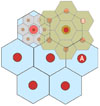 |
Groundwork research for the National Settlement Network Development Concept |
|
Commissioned by the Ministry for National Development and Economy |
|
Project leader: László Faragó |
|
During the research, parallels were drawn between the polycentric model of spatial development and the Hungarian settlement network, with consequent recommendations to treat settlements not by themselves, but organised into functional urban areas (FUAs). Based on their role in the economy and service provision, we classified settlements into four tiers: the Budapest metropolitan area, nationally (in the longer run, internationally) relevant functional urban areas, large and medium-sized urban areas of regional relevance and small town areas with a local role. Accessibility needs to be improved with an eye towards the integrated development of cities and villages, drawing attention to the need of transport and ICT sector development. We made recommendations on the possibilities of incorporating FUAs into current development systems, required institutional changes, and the instruments that should accompany this concept. |
|
|
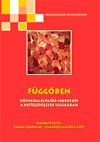 |
The issues of local government size and public utility economies of scale with special respect to the supply ability of small settlement local governments |
|
Commissioned by National Development Plan ROP 3.1.1. |
|
Tendering controlling authority: Hungarian Public Administration Institute |
|
Project leader: Katalin Kovács |
|
The research, undertaken in ten Hungarian microregions, proved that there is no alternative to cooperation in spaces dominated by small settlements; however, it is a question for debate how these cooperations should operate with regards to spatial scale (inter-settlement/sub-microregional or microregional), the range of public utilities integrated and the principles of cooperation. The analysis highlighted the unfavourable processes currently affecting the local government system in small settlements, the dominance of cost-benefit-based considerations, the hurried introduction of “reforms” with a disregard for social costs, as well as the fragility of cooperation borne in a state of urgency. |
|
|
 |
Regional Innovation Strategy in Southern Transdanubia (RIS) |
|
Commissioned by European Commission DG Enterprise |
|
Project leader: Zoltán Gál |
|
RIS aimed to develop a long-term strategy (up to the year 2010) based on wide consensus, efficient operation and a stable institutional system to enhance the region’s competitiveness through innovation. To achieve the basic objective, RIS-ST identified sectoral aims in cultural industry, healthy industry, environmental industry, food industry and agrarian innovation, machine industry, electronics, and textile and leather industry. Horizontal objectives sought to develop the RIA-NET (Regional Innovation Agency Network) institutional system, innovation finance, and the systems of vocational and further training. |
|
|
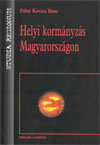 |
Territorial public administration and the development institution system |
|
Commissioned by the Ministry for Local Governments and Regional Development, Prime Minister’s Office |
|
Project leader: Ilona Pálné Kovács |
One of the most serious deficits of the Hungarian system of governance comes from the structure of the local government system. Microregions, created to address the problems of fragmentation among settlement local governments, only provided partial solutions. The vertically and horizontally divided meso-level is a bottleneck of spatial development policy and exercising territorial integration functions. While in the preceding decades, the incentive to create self-governing regions was declared ever more firmly, the reform process had seen little progress. The multiplication of institutions on the meso-level diminishes the effectiveness of coordination and transparency, producing democratic deficit and uncontrolled networks of elites.
The institutional system of spatial development, whose creation became an internationally recognised step in modernisation in the nineties, found itself in a controversial role after EU accession. The centralisation of the institutions disposing over EU funds, as our research has found, damaged the effectiveness of planning and resource allocation, as well as regionalism’s opportunity for wider social recognition.
The Hungarian government system had stayed centralised, which means it is less effective in involving local endogenous resources, the efficient use of EU funds, and it fulfills the needs for partnership with civilians and economic actors only in a formal way. |